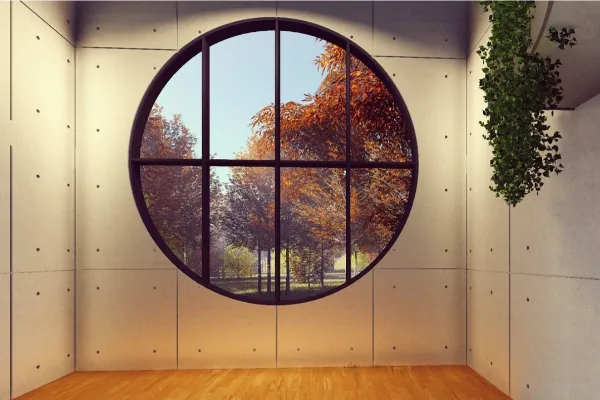Move In and Move out with Life
Matter Most
Our professional organizers can manage and transition so you can focus on what matter most
Save Energy
Save Time
Save your Sanity
Move In and Move out with Life
Matter Most
Our professional organizers can manage and transition so you can focus on what matter most
Save Energy
Save Time
Save your Sanity
Move In and Move out with Life
Matter Most
Our professional organizers can manage and transition so you can focus on what matter most
Save Energy
Save Time
Save your Sanity
Move In and Move out with Life
Matter Most
Our professional organizers can manage and transition so you can focus on what matter most
Save Energy
Save Time
Save your Sanity
KELI & CO
WELCOME TO THE BLOG

How Glass Features In Your Home Can Usher In A New Era Of Minimalist Living
Minimalism, as a design concept and a way of life, has gained immense popularity in recent years. Rooted in the idea of simplicity, minimalism aims to create a living space that is uncluttered, functional, and aesthetically pleasing. The concept is often attributed to the German-American architect Ludwig Mies van der Rohe, who coined the famous phrase "less is more." Minimalism has found its way into various aspects of life, including art, fashion, and interior design, and it has become synonymous with a lifestyle that values quality over quantity.
In home design, minimalism is not just a trend but a philosophy that seeks to enhance the quality of life by reducing the unnecessary and focusing on the essential. One key element that has become integral to achieving a minimalist home is the use of glass. Glass features in your home can usher in a new era of minimalist living by maximizing space, bringing form, focus, and functionality to the forefront, adopting new techniques like glass bending, and offering overall advantages that align with the principles of minimalism.
How Glass Helps Maximize Space
Glass has the unique ability to create a sense of openness and spaciousness in any living area. Its transparency allows natural light to flood the space, making it appear larger and more inviting. In the context of minimalist living, where clutter is intentionally minimized, the use of glass becomes crucial in creating an atmosphere of simplicity.
Glass features, such as large windows, glass doors, or even glass partitions, can fill structural voids in a home. Instead of solid walls that might make a space feel closed off, glass elements maintain a visual connection between different areas. This not only maximizes the available space but also contributes to a seamless flow within the home.
Beyond its practicality, glass adds aesthetic appeal to minimalist design. The clean lines and transparency of glass contribute to the overall sense of simplicity and elegance. Glass furniture, for example, can be both functional and visually light, enhancing the minimalist aesthetic by avoiding unnecessary visual weight.
Ushers in the Three Fs: Form, Focus & Functionality to the Home
Glass is a versatile material that effortlessly integrates with various interior design styles. In the context of minimalism, it plays a pivotal role in achieving the principles of form, focus, and functionality.
Form: Glass features, whether in the form of furniture or architectural elements, contribute to the overall form of a minimalist space. The simplicity of glass design aligns with the clean lines and geometric shapes often associated with minimalism. A glass coffee table or a sleek glass staircase, for instance, becomes a statement piece without overwhelming the space.
Focus: Minimalist design emphasizes a few well-chosen elements rather than an abundance of decorations. Glass features act as focal points, drawing attention without creating visual chaos. A strategically placed glass wall or a large window can frame views and establish a connection with the surrounding environment, promoting a sense of calm and focus within the home.
Functionality: Minimalist living is not just about aesthetics but also about practicality. Glass features enhance the functionality of a space by providing transparency, allowing residents to multitask visually, and maintaining a sense of openness. Glass partitions, for example, can define different areas within an open floor plan without sacrificing the feeling of spaciousness.
Adopting New Techniques, Bringing Something New to the Home
As minimalist design evolves, so do the techniques used to incorporate glass into home interiors. One such technique that has gained prominence is glass bending. Glass bending involves heating glass to a high temperature and shaping it into curved or slumped forms. This technique brings a new dimension to minimalist design by introducing organic shapes and fluid lines.
Glass bending allows for the creation of custom pieces that fit seamlessly into minimalist spaces. Curved glass countertops, for instance, add a touch of elegance while maintaining the overall simplicity of the design. The evolution of glass bending techniques has enabled designers to push boundaries and experiment with forms that were once considered challenging in minimalist aesthetics.
The use of curved or slumped glass in furniture, lighting fixtures, and even architectural elements has become a hallmark of contemporary minimalist design. These new techniques not only add a layer of sophistication to the home but also showcase the adaptability of glass in meeting the ever-changing demands of design trends.
Overall Advantages of Using a Minimalist Style with Glass in the Home
The idea of uncluttered and clean space is truly a driver behind the minimalist movement, and integrating glass into the design aligns perfectly with these principles. The overall advantages of using a minimalist style with glass in the home are manifold.
First and foremost, the transparent nature of glass promotes a sense of openness and airiness, making even smaller spaces feel more significant. This contributes to a feeling of tranquility and simplicity, which are at the core of minimalist living.
Furthermore, the use of glass allows for a seamless integration of indoor and outdoor spaces, connecting residents with nature. The abundant natural light that glass brings into the home not only reduces the need for artificial lighting but also positively impacts mood and well-being.
In terms of maintenance, glass is easy to clean and maintain, adding to the practicality of a minimalist lifestyle. The absence of excessive decor and intricate detailing simplifies the cleaning process, aligning with the minimalist principle of focusing on what is essential.
In conclusion, the integration of glass features in your home can usher in a new era of minimalist living. From maximizing space to bringing form, focus, and functionality to the forefront, and adopting new techniques like glass bending, the advantages of using a minimalist style with glass are clear. As we continue to embrace the simplicity and elegance of minimalism, glass remains a key element that not only enhances the aesthetic appeal of our homes but also contributes to a lifestyle centered around purposeful and intentional living.

How Glass Features In Your Home Can Usher In A New Era Of Minimalist Living
Minimalism, as a design concept and a way of life, has gained immense popularity in recent years. Rooted in the idea of simplicity, minimalism aims to create a living space that is uncluttered, functional, and aesthetically pleasing. The concept is often attributed to the German-American architect Ludwig Mies van der Rohe, who coined the famous phrase "less is more." Minimalism has found its way into various aspects of life, including art, fashion, and interior design, and it has become synonymous with a lifestyle that values quality over quantity.
In home design, minimalism is not just a trend but a philosophy that seeks to enhance the quality of life by reducing the unnecessary and focusing on the essential. One key element that has become integral to achieving a minimalist home is the use of glass. Glass features in your home can usher in a new era of minimalist living by maximizing space, bringing form, focus, and functionality to the forefront, adopting new techniques like glass bending, and offering overall advantages that align with the principles of minimalism.
How Glass Helps Maximize Space
Glass has the unique ability to create a sense of openness and spaciousness in any living area. Its transparency allows natural light to flood the space, making it appear larger and more inviting. In the context of minimalist living, where clutter is intentionally minimized, the use of glass becomes crucial in creating an atmosphere of simplicity.
Glass features, such as large windows, glass doors, or even glass partitions, can fill structural voids in a home. Instead of solid walls that might make a space feel closed off, glass elements maintain a visual connection between different areas. This not only maximizes the available space but also contributes to a seamless flow within the home.
Beyond its practicality, glass adds aesthetic appeal to minimalist design. The clean lines and transparency of glass contribute to the overall sense of simplicity and elegance. Glass furniture, for example, can be both functional and visually light, enhancing the minimalist aesthetic by avoiding unnecessary visual weight.
Ushers in the Three Fs: Form, Focus & Functionality to the Home
Glass is a versatile material that effortlessly integrates with various interior design styles. In the context of minimalism, it plays a pivotal role in achieving the principles of form, focus, and functionality.
Form: Glass features, whether in the form of furniture or architectural elements, contribute to the overall form of a minimalist space. The simplicity of glass design aligns with the clean lines and geometric shapes often associated with minimalism. A glass coffee table or a sleek glass staircase, for instance, becomes a statement piece without overwhelming the space.
Focus: Minimalist design emphasizes a few well-chosen elements rather than an abundance of decorations. Glass features act as focal points, drawing attention without creating visual chaos. A strategically placed glass wall or a large window can frame views and establish a connection with the surrounding environment, promoting a sense of calm and focus within the home.
Functionality: Minimalist living is not just about aesthetics but also about practicality. Glass features enhance the functionality of a space by providing transparency, allowing residents to multitask visually, and maintaining a sense of openness. Glass partitions, for example, can define different areas within an open floor plan without sacrificing the feeling of spaciousness.
Adopting New Techniques, Bringing Something New to the Home
As minimalist design evolves, so do the techniques used to incorporate glass into home interiors. One such technique that has gained prominence is glass bending. Glass bending involves heating glass to a high temperature and shaping it into curved or slumped forms. This technique brings a new dimension to minimalist design by introducing organic shapes and fluid lines.
Glass bending allows for the creation of custom pieces that fit seamlessly into minimalist spaces. Curved glass countertops, for instance, add a touch of elegance while maintaining the overall simplicity of the design. The evolution of glass bending techniques has enabled designers to push boundaries and experiment with forms that were once considered challenging in minimalist aesthetics.
The use of curved or slumped glass in furniture, lighting fixtures, and even architectural elements has become a hallmark of contemporary minimalist design. These new techniques not only add a layer of sophistication to the home but also showcase the adaptability of glass in meeting the ever-changing demands of design trends.
Overall Advantages of Using a Minimalist Style with Glass in the Home
The idea of uncluttered and clean space is truly a driver behind the minimalist movement, and integrating glass into the design aligns perfectly with these principles. The overall advantages of using a minimalist style with glass in the home are manifold.
First and foremost, the transparent nature of glass promotes a sense of openness and airiness, making even smaller spaces feel more significant. This contributes to a feeling of tranquility and simplicity, which are at the core of minimalist living.
Furthermore, the use of glass allows for a seamless integration of indoor and outdoor spaces, connecting residents with nature. The abundant natural light that glass brings into the home not only reduces the need for artificial lighting but also positively impacts mood and well-being.
In terms of maintenance, glass is easy to clean and maintain, adding to the practicality of a minimalist lifestyle. The absence of excessive decor and intricate detailing simplifies the cleaning process, aligning with the minimalist principle of focusing on what is essential.
In conclusion, the integration of glass features in your home can usher in a new era of minimalist living. From maximizing space to bringing form, focus, and functionality to the forefront, and adopting new techniques like glass bending, the advantages of using a minimalist style with glass are clear. As we continue to embrace the simplicity and elegance of minimalism, glass remains a key element that not only enhances the aesthetic appeal of our homes but also contributes to a lifestyle centered around purposeful and intentional living.




